Commercial leak detection is a 'no brainer'
Leak detection systems save water, cut costs and protect property.
By Nicole Krawcke
By adopting leak detection technology, businesses not only protect their infrastructure but also contribute to global water conservation efforts, aligning with both environmental and financial goals. Photos credit Watts Water Technologies
In an era where sustainability and resource efficiency are top priorities, commercial leak detection has emerged as a crucial tool for businesses aiming to conserve water and reduce costs. With increasing concerns over water scarcity and rising utility expenses, the need for proactive water management is more pressing than ever. Advanced leak detection technologies, such as IoT-enabled systems and smart water meters, are transforming how commercial properties address water loss, enabling real-time monitoring and rapid response to potential issues. By adopting these innovations, businesses not only protect their infrastructure but also contribute to global water conservation efforts, aligning with both environmental and financial goals.
“Leak detection and water conservation, in my understanding, are two sides of the same coin, and the coin being water management in buildings,” says Yaron Dycian, chief product and strategy officer for WINT. “Water runs in these pipes and buildings, and it can do all sorts of weird things, from the pipe exploding and water spilling into the building to inefficient use, which could be anything like a tap left open, to a broken toilet seal resulting in ongoing flow and waste. There’s also big machinery in a building, such as a cooling tower, that can malfunction and waste enormous amounts of water, unseen for years. By looking at water flows and understanding the story it is telling us, you can detect and prevent leaks, and you can identify inefficient use of water, and therefore, reduce waste and improve conservation.”
In fact, when leak detection technology is applied, undiscovered leaks are frequently found — especially in larger plumbing systems, notes Kenneth Fox, vice president of sales and business development for Escondido, California-based Sentinel Hydrosolutions, and the Leak Defense System.
The cost of a leak within a commercial facility can frequently reach $50,000 up to millions of dollars in damage. Photo credit Watts Water Technologies
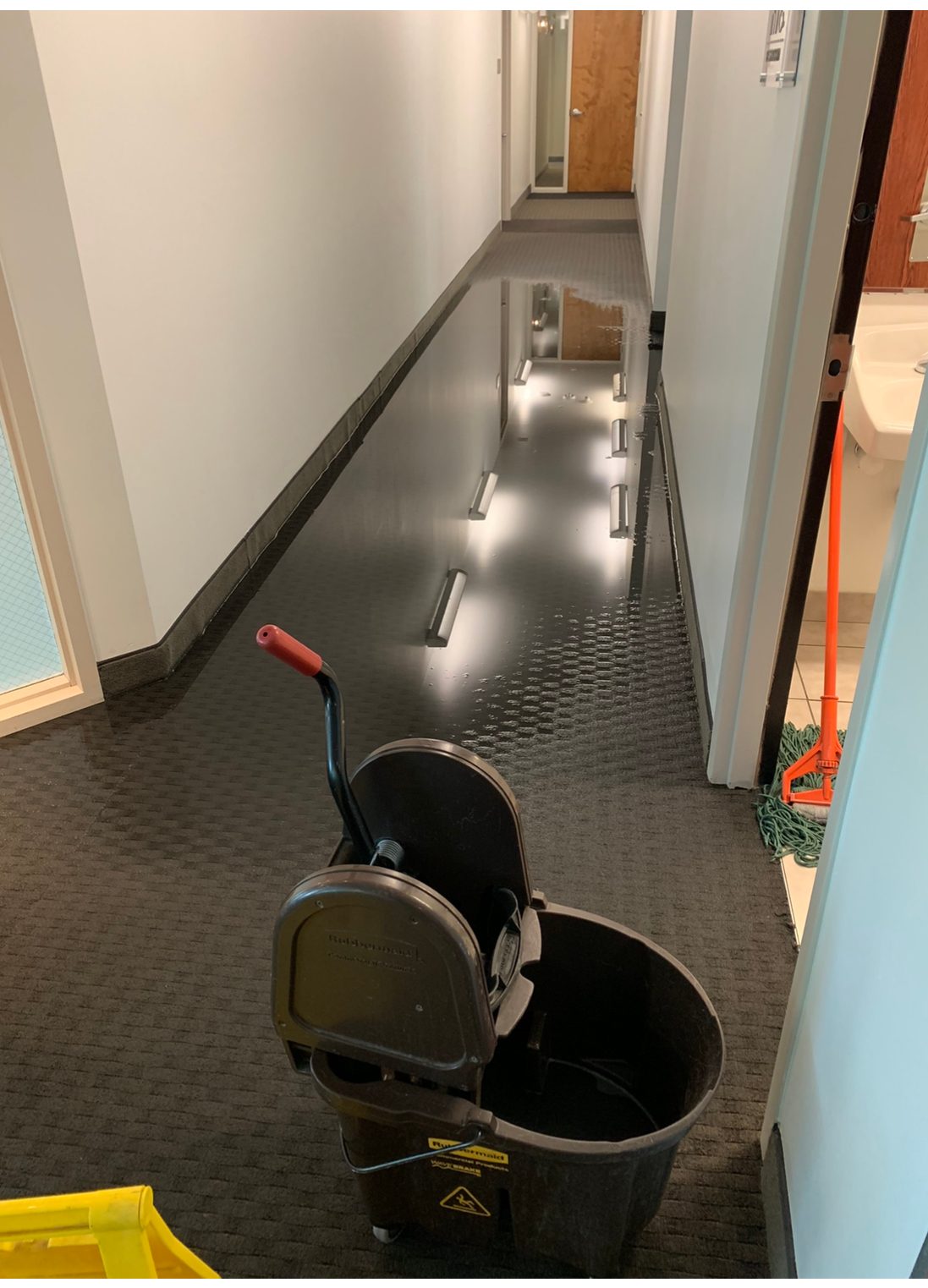
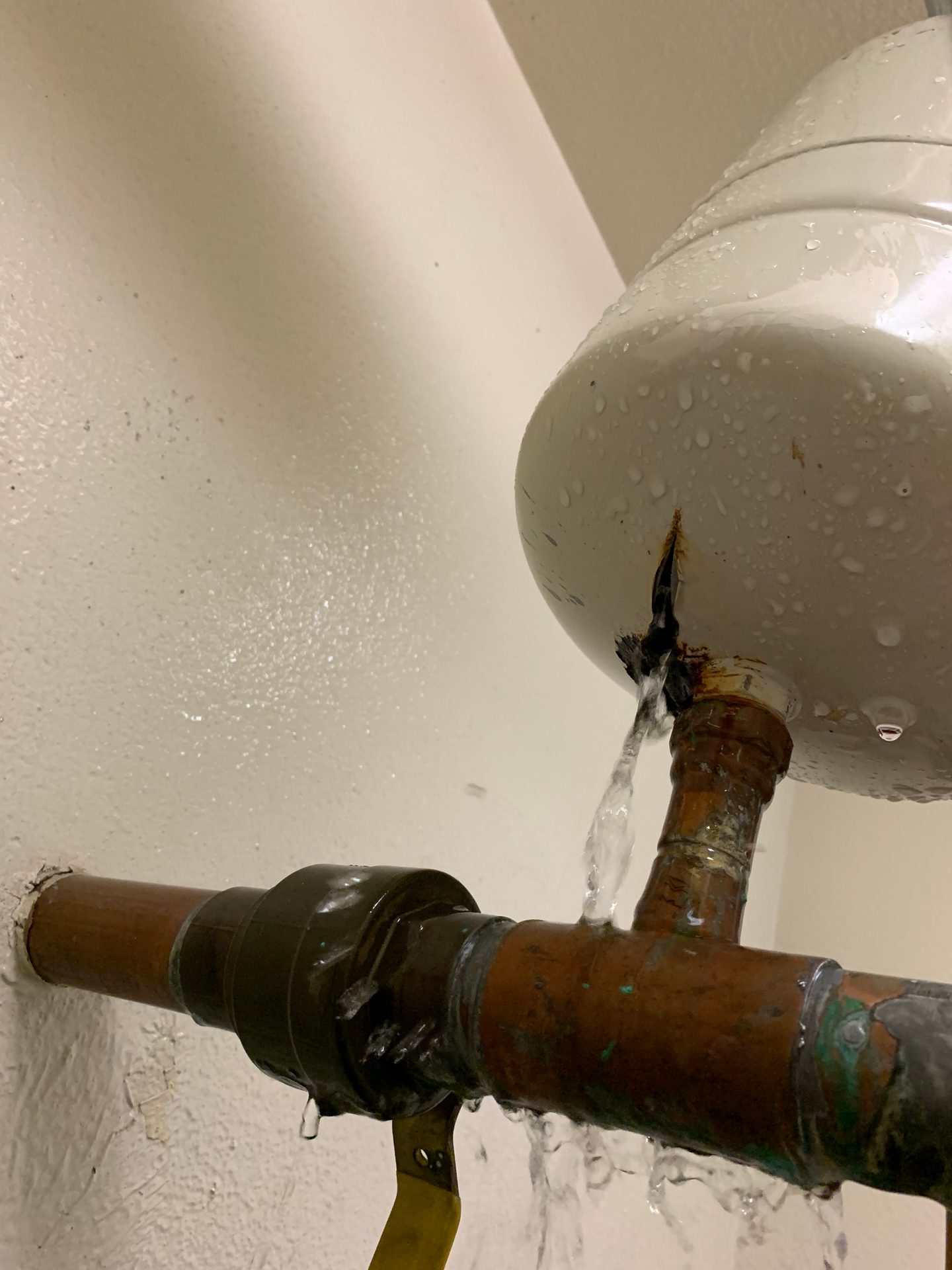
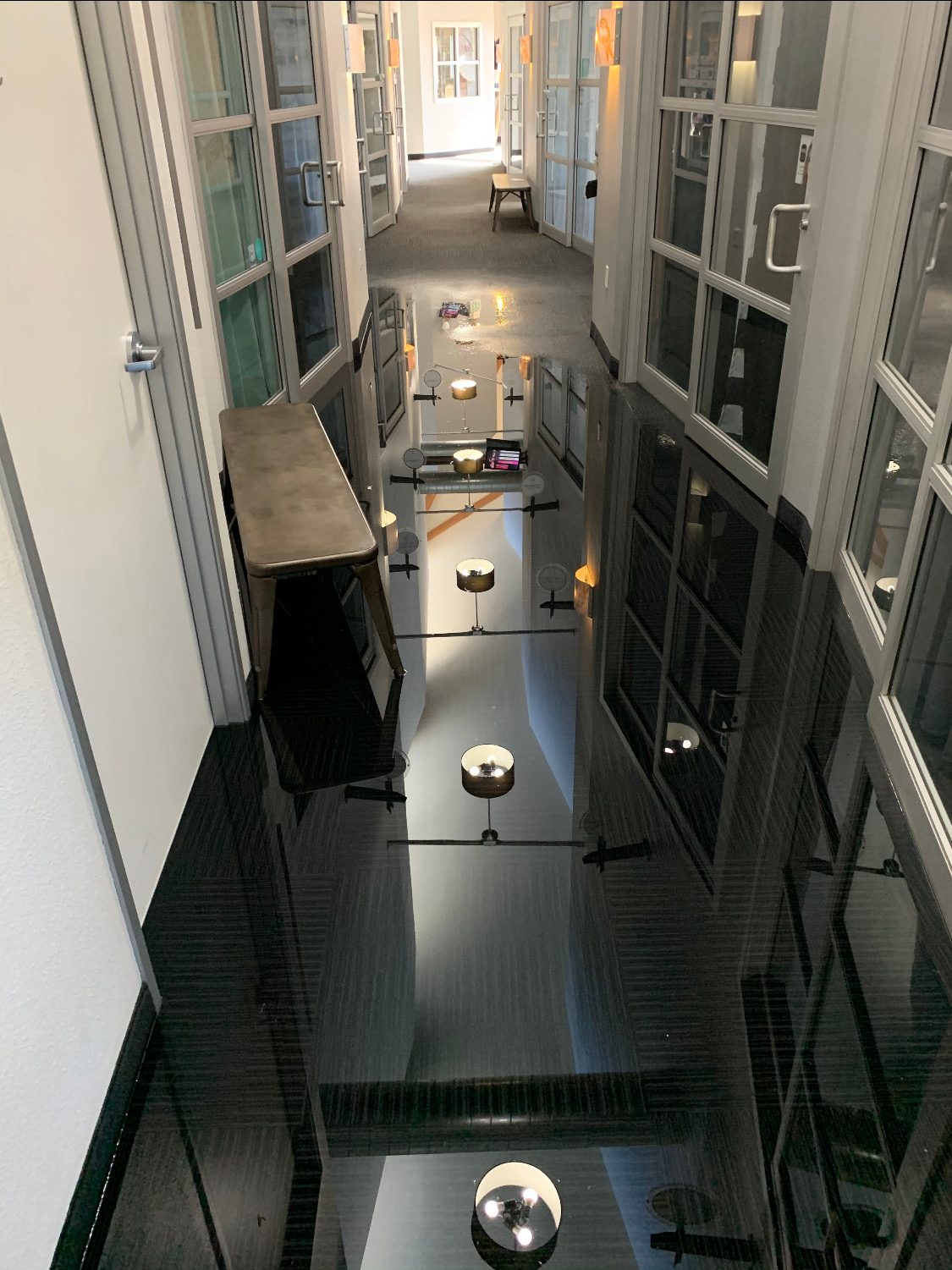
“Consider how easy it is for certain things to leak without calling attention to themselves, such as hose bibs or toilet flappers. If leaks happen behind walls, they can go undetected for years,” he says.
As an example, Fox points to Sunset Pointe, a luxury condominium complex near St. Petersburg, Florida. Since 2017, three of four six-story buildings have been built and occupied, with a fourth one now under construction. Today, all 130 occupied units, most exceeding $2 million in value, contain a Leak Defense system. Their technologies were installed after three leakage incidents — all within a six-month period in 2018 — created more than $150,000 in damage to many individual units, common areas and an elevator system.
“We haven’t had a single loss or insurance claim after installation of the Leak Defense products,” says Vince Pusateri, board president of the Sunset Pointe Condo Association.
COMMON CAUSES
Dycian refers to water leaks as “Death by 1,000 cuts.”
“There’s no one big thing — it’s always something totally mundane like a leaky toilet,” he says. “Who thinks about a leaky toilet as something that wastes water? But a leaky toilet will vary from 50 to 150 gallons per hour. Now multiply that by 24 hours a day, 365 days a year, and all of a sudden, you’ve got water that probably costs you — depending where you live — around $15,000 a year.
“And, by the way, water doesn’t just arrive in your building,” Dycian continues. “There’s energy, chemicals and whatnot involved in bringing it to your building. All of a sudden, that’s as much carbon emissions as a passenger car running for a year. That’s just a leaky toilet. What if you leave a tap open? What if your irrigation system is misconfigured and you irrigate for three hours instead of 20 minutes? Somebody could have made a mistake on the computer — it happens all the time. Cooling towers consume a lot of water legitimately, and when they go bad, they waste enormous amounts of water, and they are extremely difficult to diagnose. These are just three examples. Think of anything in the building that uses water. I've seen a case where a dishwasher, a seal has gone bad inside of the dishwasher. So instead of shutting off the water supply, it always runs a little water into the dishwasher. And that thing runs continuously. Nobody sees it because it has a mechanism to take this water and pull it down the drain so it can go on for years and years. It's endless. The point is, you can't go and solve one thing and hope the problem goes away. You need to look at the root, which is the water delivered to these systems, and then identify the anomaly at the delivery point.”
It can also be chosen for Leak Defense devices to shut off the water main instantly, preventing leakage – though all facets of a full water shut-off to all – or parts of – a facility must be considered before that’s implemented. Photo credit Watts Water Technologies
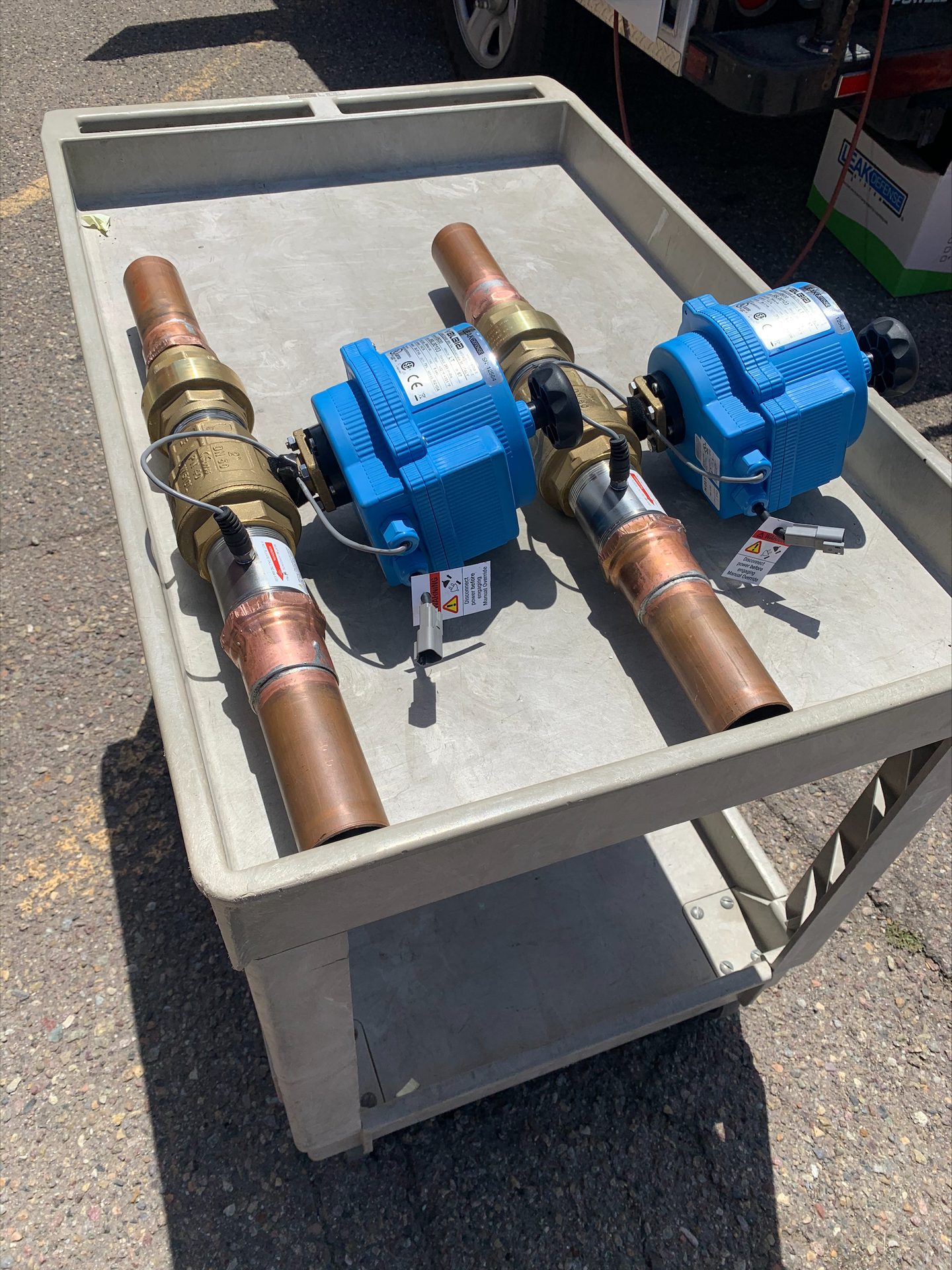
There have been instances when a Leak Defense alarm or notification goes to the contractor, who responds swiftly, solving the leak and avoiding a catastrophe before a property manager or owner is even aware of the situation. Photo credit Watts Water Technologies
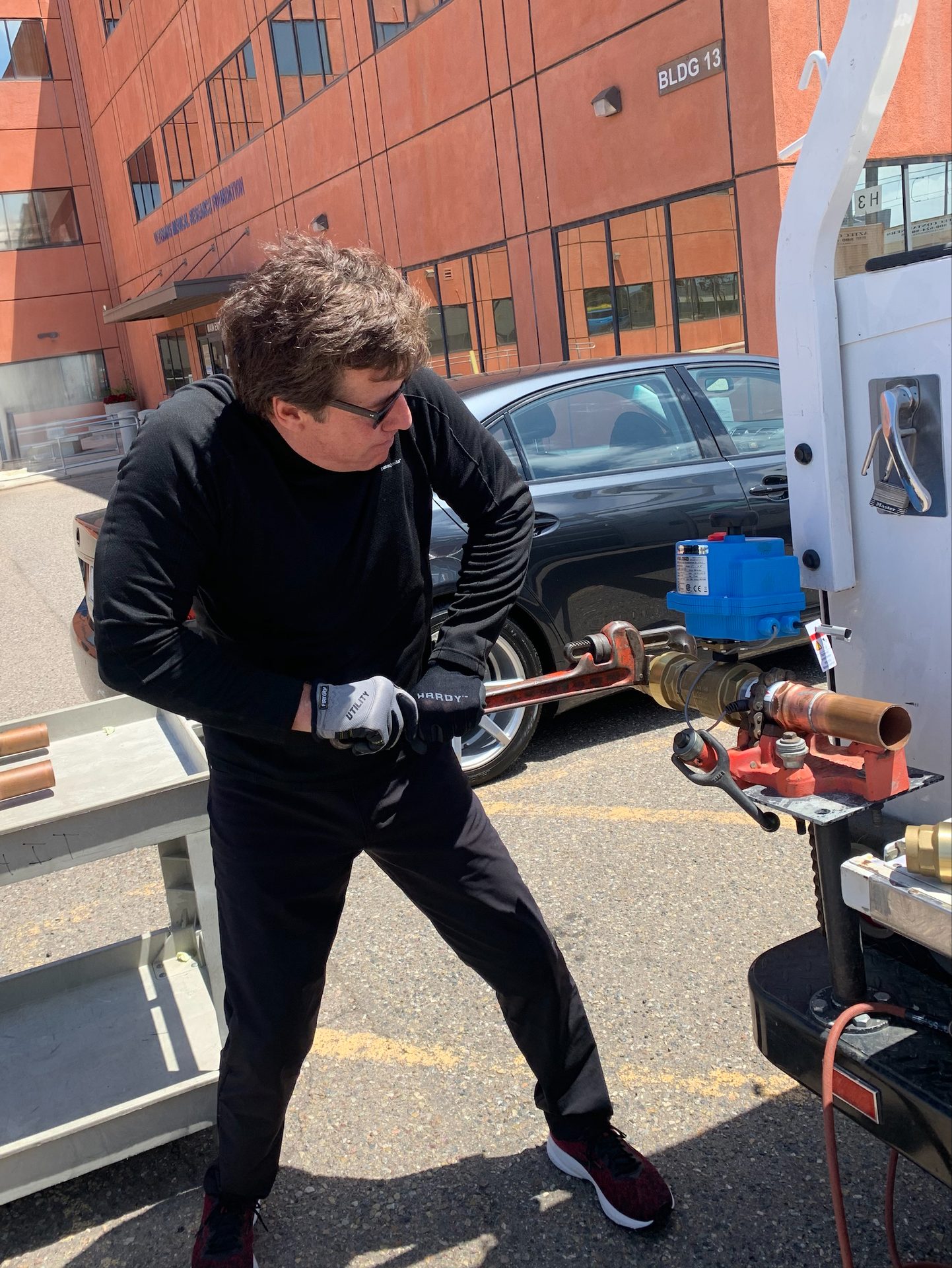
The Leak Defense monitoring system provides early detection, with notifications going out immediately to a property management firm, property owner, and also to a contracting firm, among others. Photo credit: Watts Water Technologies

Fox notes that it’s common to find auto-flush toilets and sinks that dispense water without contact, which, because of high usage, the valves become stuck in the open position, wasting large volumes of water.
“If sinks do require adjustment of a handle, they can often be left in the ‘on’ position, sometimes neglected by maintenance staff for hours or days,” he says. “Another frequent occurrence, causing leakage, are janitorial faucets — sometimes in remote closets — that are left in the open position for days. Or, perhaps there are undetected leaks behind walls. Irrigation systems are also prone to leakage; it’s not uncommon for these to go undetected for long periods of time — too often the cause of a cheap, solenoid valve that’s defective.”
INNUMERABLE BENEFITS
The Leak Defense monitoring system provides early detection, with notifications going out immediately to a property management firm, property owner and also to a contracting firm, among others, Fox explains.
“There have been instances when an alarm or notification goes to the contractor, who responds swiftly, solving the leak and avoiding a catastrophe before a property manager or owner is even aware of the situation. It can also be chosen for Leak Defense devices to shut off the water main instantly, preventing leakage — though all facets of a full water shut-off to all – or parts of – a facility must be considered before that’s implemented.”
Fox notes the cost of a leak within a commercial facility can frequently reach $50,000 up to millions of dollars in damage.
“When installed, leak monitoring and prevention systems pay for themselves during the first leak incident — and can easily exceed the installation cost of Leak Defense technology, not to mention the cost of wasted water,” he says. “It’s easy to see the value of a cost-effective solution versus the cost of water leak damage — harm to a facility that comes in many forms, including physical damage, business displacement, electrical problems and mold remediation. Many insurance companies are now disallowing and rejecting any and all claims where mold is involved. Which brings me to another facet of the challenge: the ability to insure a facility, or purchasing affordable insurance following a water leak event.”
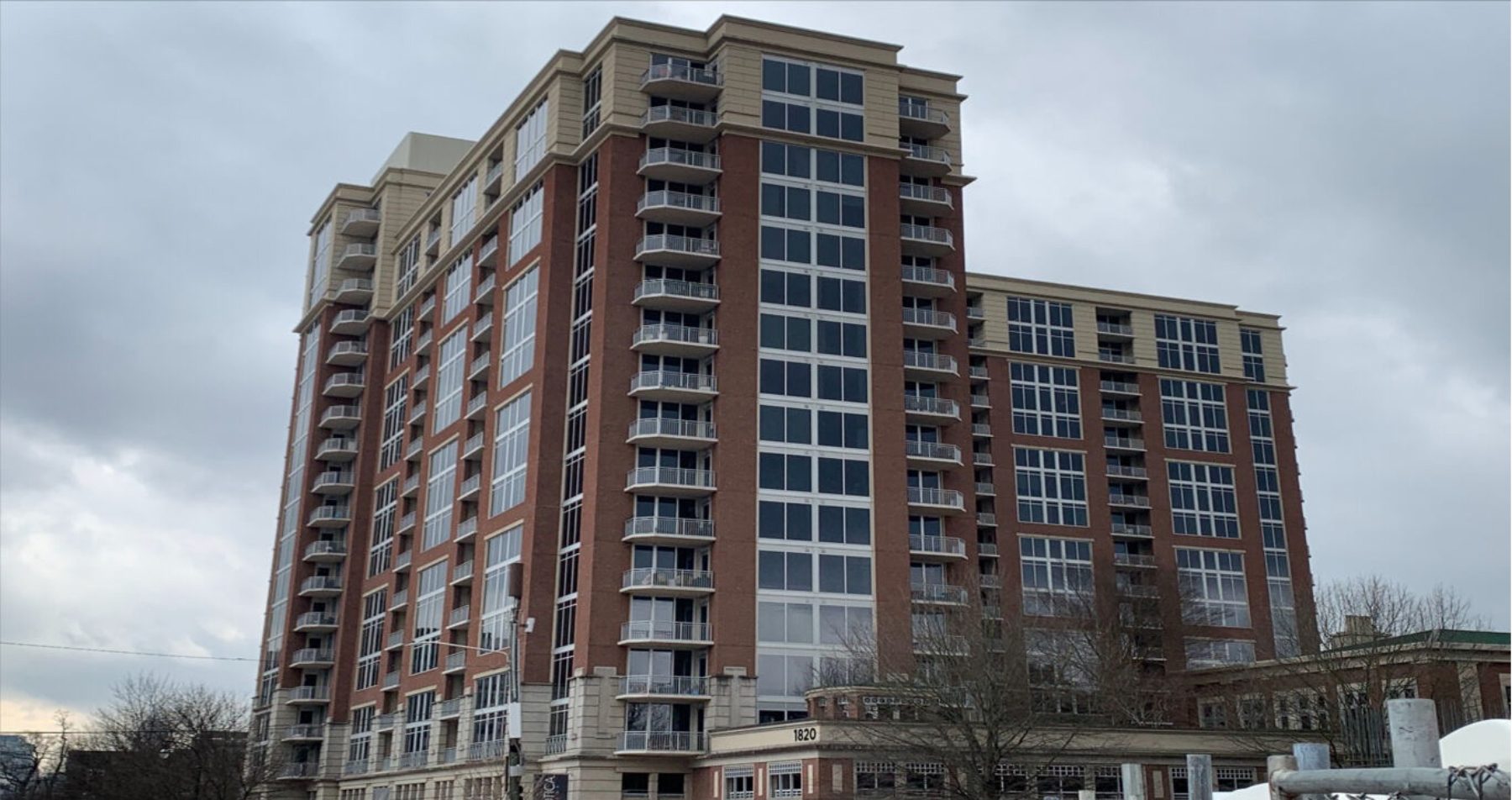
Since installing the Leak Defense System in all 218 units, Brookwood Condominiums in Atlanta has saved approximately $7,000 and almost 400,000 gallons of water per month based off previous years’ monthly water bills. Photo credit: Watts Water Technologies
Dycian notes that traditional leak detection methods are typically very slow to react. “An hour could be a lot of time if you have a large pipe leaking into the building. It can also be very inaccurate — you get false detections, misdetections and statistics that just aren’t any good. WINT AI looks at the patterns, and it identifies attributes of the patterns, and, because it can learn sophisticated and complicated things, it does an enormously better job at detection and reducing false alerts. It also doesn’t require continuous human intervention and customization of the thresholds.”
REAL-WORLD APPLICATIONS
Dycian cites the Empire State Building as an example of WINT technology in use. “The holding company that holds the building, Empire State Realty Trust, implemented WINT at the Empire State Building to reduce the building’s environmental footprint by reducing water consumption and detect and limit water leaks before they can cause significant damage to the facility. With WINT, the building saved $100,000 a year, reduced annual water consumption by 7.5 million gallons per year, reduced carbon emissions by 300 tons per year and returned the investment with a three months’ payback period.”
Brookwood Condominiums in Atlanta also saw savings after installing The Leak Defense System.
Over a period of several years, Brookwood faced several recurring water damage claims. Building management wanted a solution that would give them the ability to monitor building systems directly from their concierge desk. After research, they made arrangements for the installation of Leak Defense solutions.
“During installation, The Leak Defense System shut off the building's water supply, an action it’s designed to take when settings are exceeded,” Fox says. “There was no evidence of water damage, so the team was initially skeptical. Upon investigation, several leaks were discovered in each dwelling unit, specifically in the shower valves behind the wall, in water heaters and in toilet flappers. The leaks were too small for the water submeter to detect, but Leak Defense technology identified them almost immediately.”
The Brookwood Condominium Association decided to adopt the Leak Defense System in all 218 units. Since having the system installed, the team has reported zero water damage claims. Based on previous years’ monthly water bills, building management was able to determine that technology saved Brookwood Condominiums approximately $7,000 and almost 400,000 gallons of water per month. Over the span of a year, that is approximately $84,000 in savings. The building manager estimated a 10-year projected savings of close to $1 million dollars.
“Leak monitoring and detection technology is surprisingly affordable, especially when considering the cost of flood recovery within commercial or residential buildings,” Fox says. “The most common response among building owners following investment is ‘I wish we’d have done it sooner!’
